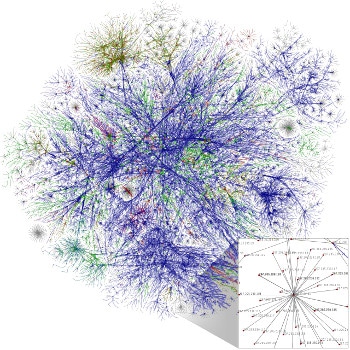
GPUs are great at rendering virtual battlefields populated by giant robots, aliens, and cybernetic soldiers.
Now the U.S. Defense Advanced Research Projects Agency (DARPA), birthplace of the Internet, wants to use GPUs to help it understand real-world battlefields, as sensors and real-time communications systems promise to give a decisive edge to those who can understand all that data first.

In one of the first of 550 talks at this week’s four-day GPU Technology Conference, Chris White, project manager at DARPA, told a packed room that GPUs – with their ability to crunch vast amounts of data quickly — could help DARPA master big data in support of governmental and military efforts.
“The GPU has enormous potential for DARPA in solving analytics problems,” White said.
White, who has spent time with a military unit in Kabul, Afghanistan, doing field research on data analysis, said that DARPA now has more than a dozen active data science projects that focus on data analytics, but just two use GPUs. One of those, DARPA’s XDATA cloud, which is focused on developing ways to process and analyze large, imperfect and incomplete data sets, would benefit from an influx of GPU know-how.
Help Wanted
White came to the conference to hang out a help-wanted sign for GPU expertise. “We don’t have many people who can program for it,” White said.
Yet.
Crunching big data is a fast-growing problem for the military community that DARPA serves. Soldiers rely on an array of sensors and communications systems to provide them with unprecedented battlefield awareness, and are under pressure to make well-informed decisions. XDATA is an effort to develop software that makes this process much more efficient.
It’s a tall task, as illustrated at a recent White House meeting White attended with governmental and military leaders.

“They all said the same thing,” White told the room of GTC attendees. “The data are changing faster than they can adjust.”
The ability to change as fast as the surrounding environment changes is a pressing need in the field of data analytics. And nowhere is that more pronounced than in military settings, where “there’s data being collected all the time in all kinds of capacities,” said White.
While GPUs can provide much-needed help, White said their complex and specialized nature has proven a challenge for DARPA.
“There are many analytics problems that need solutions, but right now we can’t do it well or quickly enough with the GPU,” he said.
A big part of the problem, said White, is that there’s been very little investment to date focused on analytics that use GPUs. “I think that’s a problem, and we’re working on changing that,” he said.
By speaking at GTC, White said he hoped to convince the GPU community that the technical approaches being taken by DARPA are interesting, and that the people working on them are extremely intelligent.